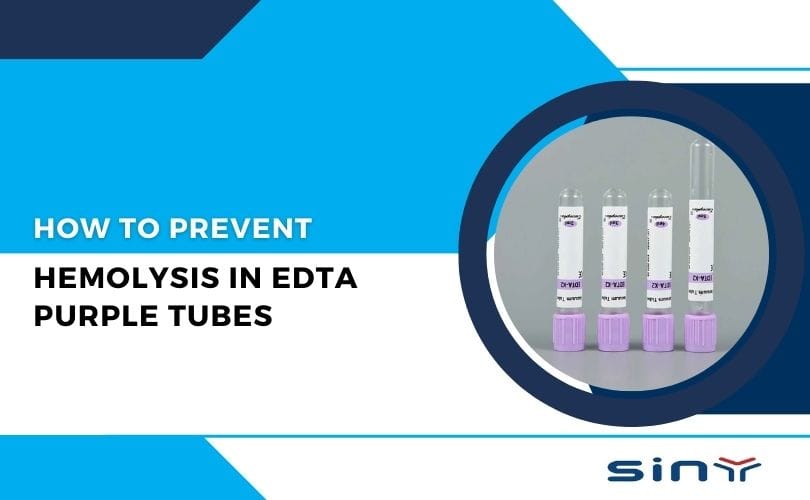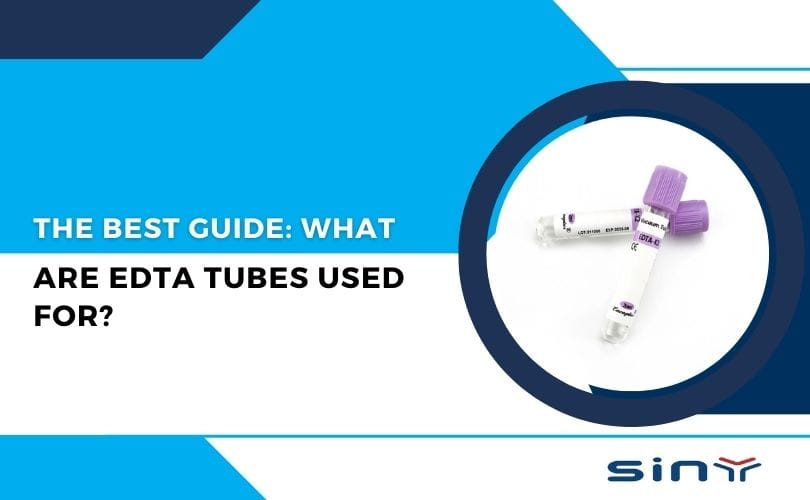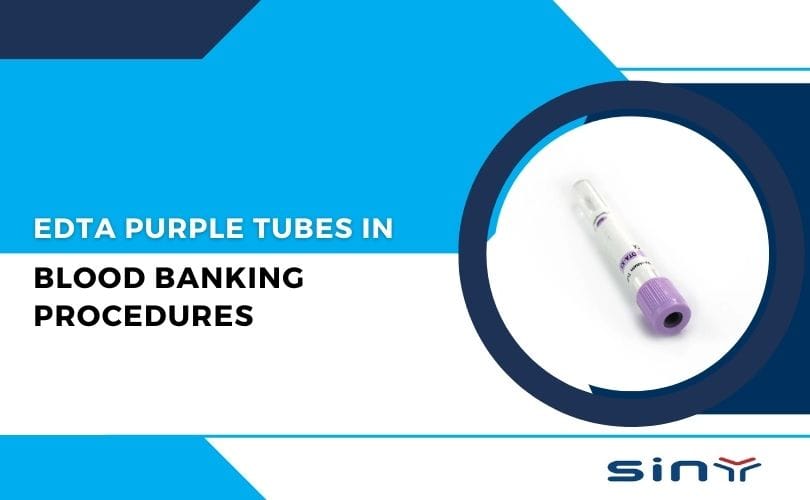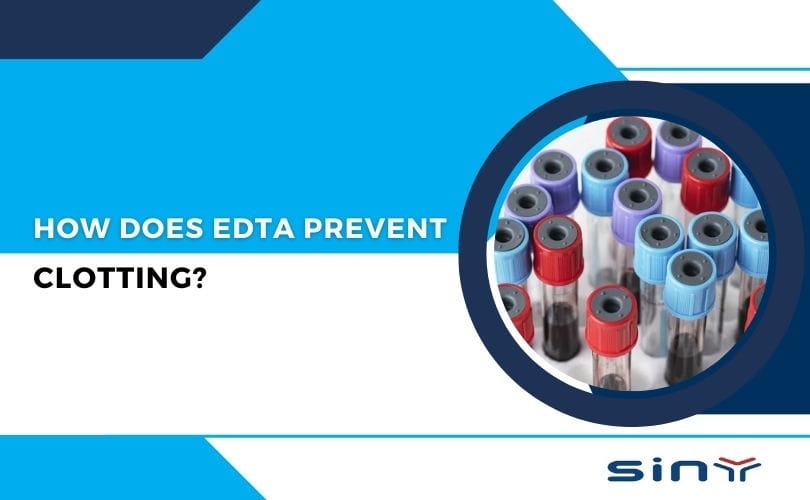Hemolysis is one of the most common pre-analytical problems in laboratory testing, especially when using EDTA Purple Tubes. When red blood cells rupture inside the tube, it affects complete blood count (CBC) results, delays diagnosis, and often forces medical staff to recollect samples. For laboratories, clinics, and diagnostic centers, preventing hemolysis is essential for reliable results, better workflow, and improved patient care.
This guide explains every important detail about preventing hemolysis in EDTA Purple Tubes, how these tubes work, what they are used for, common mistakes during blood collection, and updated handling techniques used globally. It also provides value for Bangladesh-based diagnostic centers by covering details like EDTA tube price in China and linking related products from https://www.edtatube.com/.
What Are EDTA Purple Tubes?
EDTA Purple Tubes—also known as lavender-top tubes—are vacuum blood collection tubes containing ethylenediaminetetraacetic acid (EDTA) as an anticoagulant. EDTA binds calcium in the blood, preventing clotting and stabilizing cells for hematology tests.
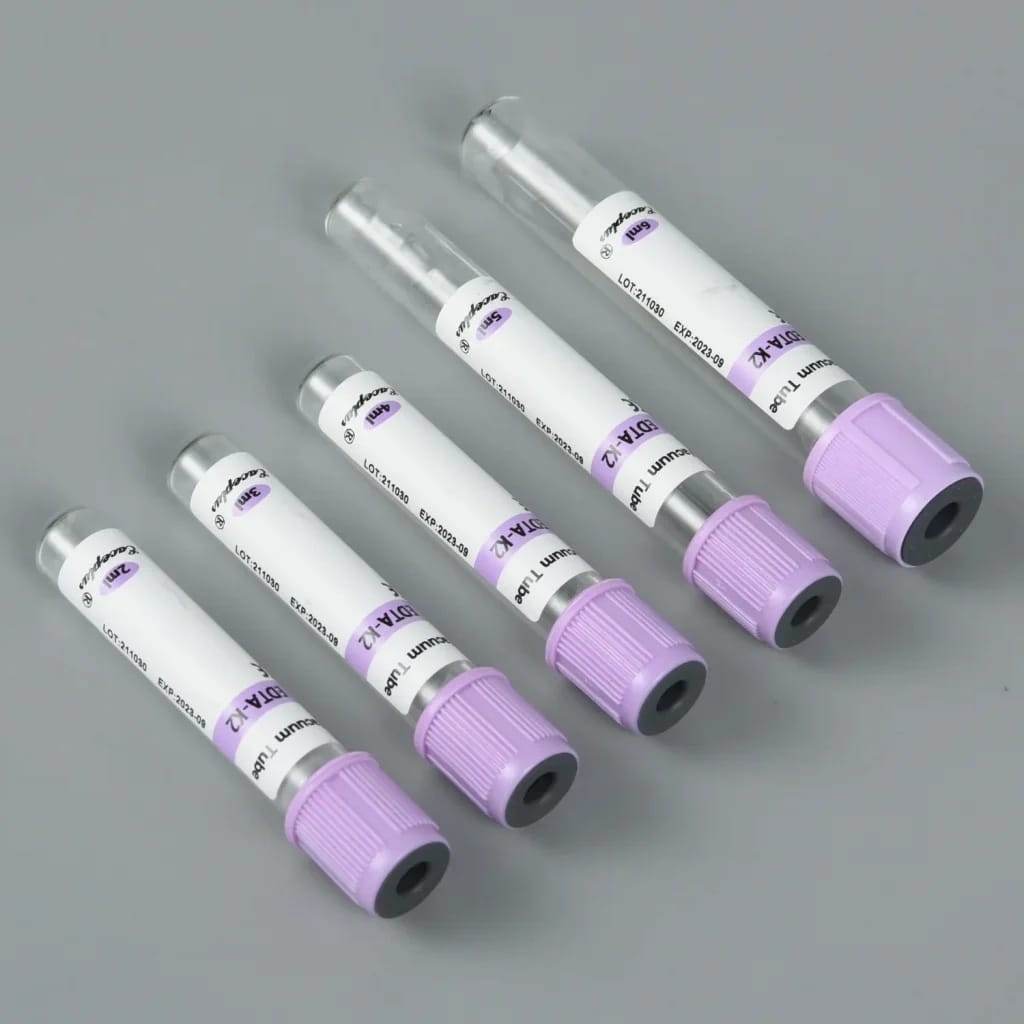
To understand EDTA precisely, here is a scientific reference:
EDTA: https://en.wikipedia.org/wiki/Ethylenediaminetetraacetic_acid
These tubes are widely used in hospitals, pathology labs, blood banks, and research facilities. They are essential for high-accuracy CBC tests, blood grouping, and many cell-related diagnostics.
For detailed product listings, visit:EDTA Tubes Category .
You can also explore EDTA Purple Tubes manufactured by Siny Medical.
How Does EDTA Work in Purple Top Tubes?
The EDTA inside these tubes binds to calcium ions immediately after blood enters. Since calcium is essential for clotting pathways, once it is neutralized, blood cannot clot. This controlled anticoagulation keeps blood cells intact for analytical testing.
A complete explanation is available here:
The typical EDTA concentration ensures:
Stable morphology of blood cells
Minimal platelet clumping
Prevention of micro clots
Consistent WBC, RBC, and platelet counts
Well-designed EDTA tubes—such as the SINY Disposable Vacuum Blood Collection Tube with Purple Cap—maintain optimal anticoagulant levels:
Why Are EDTA Tubes Purple?
The purple (lavender) color identifies the tube type according to global laboratory color-coding systems. EDTA tubes manufactured worldwide—including products from Siny Medical and EDTA Tube suppliers—use this color standard for fast recognition.
More details here: Test Are EDTA Tube Purple
What Is the Lavender Blood Tube Used For?
The lavender or purple top tube is used for hematology-based tests. These are the most common uses:
Complete Blood Count (CBC)
ESR (when using automated analyzers)
Hemoglobin & Hematocrit
Reticulocyte count
HbA1c testing
Blood typing (for some methods)
CD4 count (immunology)
To understand extended use cases, see:
https://www.edtatube.com/10ml-edta-purple-top-tubes-uses-benefits-guide/
For 10ml EDTA Tubes:
https://www.sinymedical.com/product/10ml-edta-tube-with-purple-top/
Causes of Hemolysis in EDTA Purple Tubes
Hemolysis usually happens before the sample reaches the analyzer. The most frequent causes include:
1. Using the wrong needle size
Very small needles (e.g., 25G) damage red blood cells.
2. Excessive tourniquet time
More than 1 minute increases pressure and cell fragility.
3. Vigorous shaking of the tube
This breaks erythrocytes and leads to sample failure.
4. Incorrect blood-to-EDTA ratio
Underfilled tubes have too much EDTA, leading to RBC shrinkage and hemolysis.
5. Drawing blood through IV lines
Pressure changes cause hemolytic shearing.
6. High suction pressure during venipuncture
Pulling the plunger manually forces RBCs through narrow spaces.
7. Collection from sites with hematomas
Damaged tissue and old blood raise hemolysis risk.
8. Using expired or low-quality tubes
Weak vacuum, contaminated tubes, or unstable EDTA can ruin the sample.
High-quality tubes reduce this issue—for example:
EDTA K2 Blood Collection Tube → https://www.edtatube.com/product/edta-k2-blood-collection-tube-with-purple-cap/
How to Prevent Hemolysis in EDTA Purple Tubes
Preventing hemolysis requires proper training, correct equipment, and correct handling. Below is the most detailed guidance for clinics, phlebotomists, and laboratory technologists.
Use the Right Needle Size
A standard 21G or 22G needle is ideal. Too small a gauge increases mechanical stress on RBCs and causes hemolytic plasma.
Reduce Tourniquet Time
Keep tourniquet application under 60 seconds. If time exceeds this, release it and allow circulation to normalize before puncture.
Avoid Drawing Blood from IV Lines
If necessary, follow these rules:
Stop IV infusion for 2 minutes
Discard the first 5 ml
Use a new needle and tube
Ensure Proper Tube Filling
Each EDTA tube is vacuum-calibrated for a specific blood volume. Underfilling is dangerous because excess EDTA leads to:
Shrinking of RBCs
False microcytosis
Lower hematocrit
Hemolysis
Quality tubes feature precise vacuum calibration. Explore options here:
6ml EDTA Tube with Purple Cap → https://www.edtatube.com/product/6ml-edta-tube-with-purple-cap/
Mix Gently, Not Vigorously
Mix the tube using gentle inversion (5–8 times). Avoid shaking or rapid wrist movements, as this breaks cell membranes.
Avoid Prolonged Storage Before Testing
Hemolysis increases with temperature changes and delayed processing. Follow these guidelines:
Analyze CBC within 6 hours
Store tubes at 4–8°C if delay is unavoidable
Avoid freezing
Prevent Temperature Shock
Blood collected during hot weather (like in Bangladesh) must be kept in insulated carriers. Sudden high-temperature exposure ruins cells.
Use High-Quality EDTA Tubes
Poorly manufactured tubes cause:
Weak vacuum
EDTA layering issues
Contamination
Inconsistent anticoagulant proportion
For reliable tubes, refer to:
https://www.edtatube.com/products/
And Siny Medical global product line:
https://sinymedical.en.made-in-china.com/
You can also follow their manufacturing videos here:
www.youtube.com/@sinymedical
EDTA Purple Tube Blood Test Name
The most common blood test performed using the purple tube is CBC (Complete Blood Count). Other blood test names include:
CBC with ESR
Complete Hemogram
HbA1c
RBC Morphology Study
ANC/ALC Count
Reticulocyte Count
Platelet Count
These tests rely on stable RBCs and WBCs; therefore, preventing hemolysis is essential.
Uses of EDTA Purple Tubes
EDTA purple tubes are indispensable in medical diagnostics. Here are their primary applications:
- Complete Blood Count (CBC): Measures red blood cells, white blood cells, and platelets.
- Blood Typing: Determines blood group and Rh factor.
- Hemoglobin Analysis: Assesses hemoglobin levels for anemia diagnosis.
- Reticulocyte Count: Evaluates immature red blood cells.
- Erythrocyte Sedimentation Rate (ESR): Measures inflammation levels.
For a comprehensive guide on the uses of EDTA tubes, check out 10ml EDTA Purple Top Tubes: Uses & Benefits Guide.
What Causes Hemolysis in EDTA Purple Tubes?
Hemolysis occurs when red blood cells rupture, releasing hemoglobin into the plasma. This can lead to inaccurate test results and sample rejection. Common causes include:
- Improper Venipuncture Technique: Using a needle that is too small or applying excessive force during blood draw.
- Vigorous Mixing: Shaking the tube vigorously instead of gently inverting it.
- Prolonged Tourniquet Application: Leaving the tourniquet on for too long increases pressure, causing cell rupture.
- Incorrect Tube Fill: Underfilling or overfilling the tube affects the blood-to-anticoagulant ratio.
- Temperature Extremes: Exposing the sample to extreme heat or cold damages blood cells.
Understanding these causes is the first step in preventing hemolysis. For more insights, visit Why Are EDTA Tubes Purple?.
Benefits of Using High-Quality EDTA Tubes
Investing in high-quality EDTA tubes ensures reliable results and minimizes the risk of hemolysis. Benefits include:
- Consistent Anticoagulant Concentration: Ensures accurate test results.
- Sterility: Reduces the risk of contamination.
- Durability: Withstands handling and transportation without compromising sample integrity.
Our 6ml EDTA Tube with Purple Cap and EDTA K2 Blood Collection Tube with Purple Cap are designed to meet these standards.
Summary
EDTA purple tubes are vital for hematology tests, but improper handling can lead to hemolysis, compromising test results. By following best practices—such as using proper venipuncture techniques, gentle mixing, and correct tube filling—you can prevent hemolysis and ensure accurate diagnostics. For high-quality EDTA tubes, explore our collection at EDTA Tube.
For further inquiries, feel free to Contact Us.
FAQs
1. What is the main purpose of EDTA in purple tubes?
EDTA prevents blood clotting by binding calcium, allowing accurate hematology analysis.
2. What tests are performed using EDTA Purple Tubes?
CBC, ESR, HbA1c, reticulocyte count, and many cell-based tests.
3. Why does hemolysis happen?
Common causes include small needles, shaking the tube, wrong blood volume, or drawing from IV lines.
4. How many times should EDTA tubes be mixed?
Gently invert 5–8 times to distribute the anticoagulant.
5. Can temperature variations cause hemolysis?
Yes. High heat or freezing conditions damage red blood cells.
6. What color is the EDTA tube?
Purple/lavender, following global color standards.

